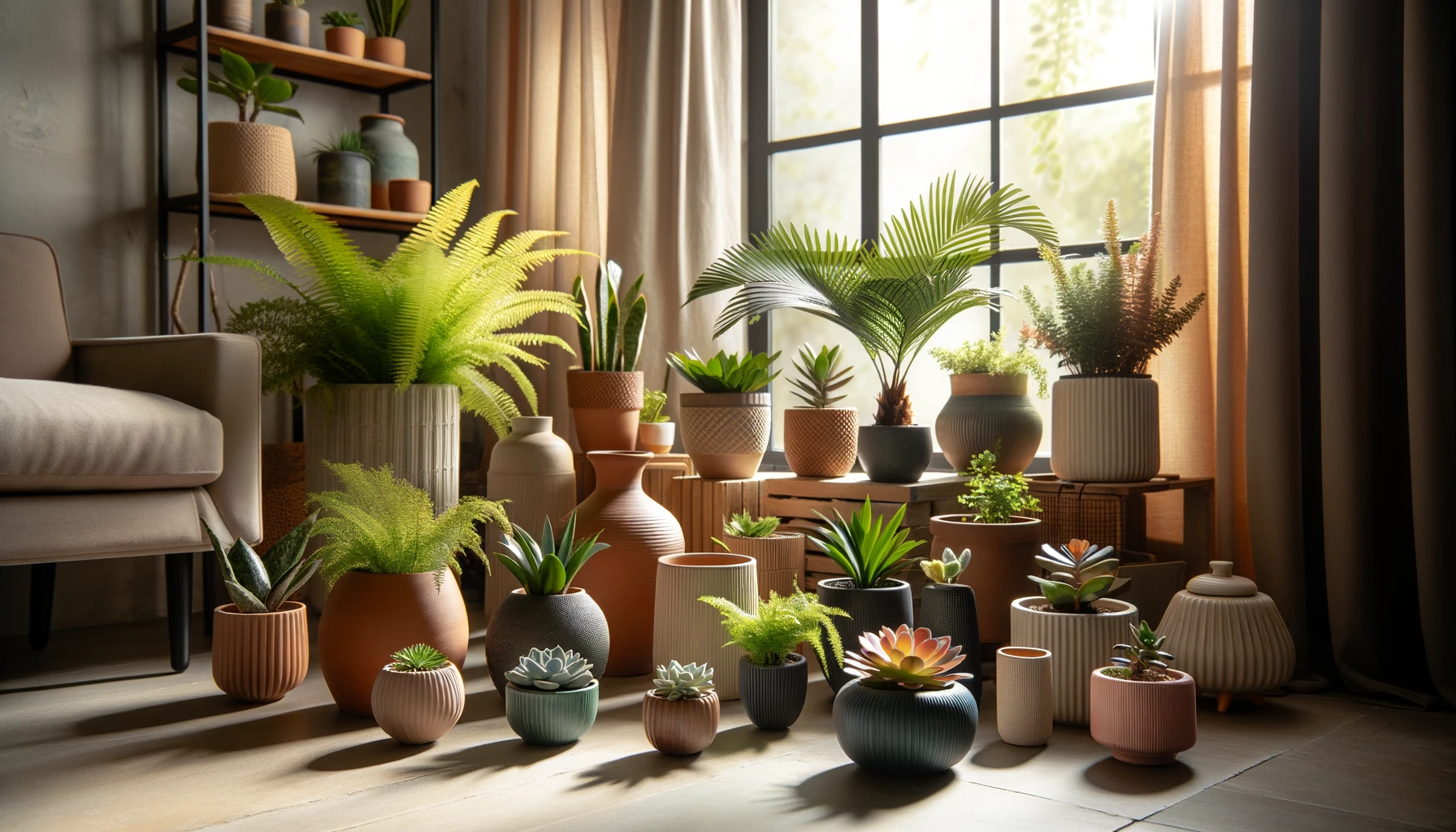Selecting the right pot is one of the most important steps to ensure your plants grow healthy and thrive. The wrong choice can affect root development, water retention, and even the stability of your plant. In this article, you’ll learn how to choose the ideal pot for different types of plants, considering factors such as material, size, drainage, and aesthetics.
Why Is Choosing the Right Pot So Important?
A pot is not just a decorative item; it plays a crucial role in the overall health of your plant. It determines root space, as the pot provides enough room for roots to grow and spread. A cramped pot can stunt growth, while an oversized one can lead to waterlogging. It also influences water management, as pots with proper drainage help prevent overwatering, a common cause of plant death. Additionally, a sturdy pot ensures plant stability, especially for larger or top-heavy varieties. Finally, a well-chosen pot adds aesthetic appeal, enhancing the beauty of your indoor or outdoor space.
Factors to Consider When Choosing a Pot
Material
The material of the pot affects its durability, water retention, and temperature regulation. Terracotta pots are porous and allow air and moisture to pass through, which benefits plants prone to root rot. However, they dry out faster, requiring frequent watering. Plastic pots are lightweight, affordable, and retain moisture better than terracotta. They are ideal for plants that prefer consistent soil moisture. Ceramic pots often come glazed, making them less porous and suitable for decorative purposes, though they can be heavy and less breathable. Metal pots offer a modern look but tend to retain heat, which may harm the roots in direct sunlight.
Size
Choosing the correct size is essential for root growth. A pot that’s too small restricts the plant’s development, leading to root-bound conditions. Conversely, an oversized pot holds excessive moisture, increasing the risk of root rot. A general rule is to select a pot that is 1-2 inches larger in diameter than the plant’s root ball for small plants and 2-4 inches for larger ones.
Drainage
Good drainage is vital for most plants. Ensure your pot has drainage holes to allow excess water to escape. For decorative pots without holes, consider using them as outer containers, with the plant placed in a smaller pot inside. Adding a layer of pebbles at the bottom can help improve water flow, though it’s not a substitute for proper drainage holes.
Shape
The shape of the pot can also affect plant health. Tall, narrow pots are ideal for plants with deep root systems, like ferns or palms. Shallow, wide pots work better for succulents and cacti, which have shallow root systems. For climbing plants, pots with a stable, wide base help support their upward growth.
Aesthetic and Placement
While function should come first, the pot’s appearance is also important. Match the pot’s style and color to your home’s decor or garden design. If placing pots outdoors, consider their weight and stability, especially in windy areas.
Common Mistakes to Avoid
One common mistake is prioritizing aesthetics over functionality. A beautiful pot without proper drainage can quickly harm your plant. Another mistake is choosing a pot solely based on its current size. Plants grow, and selecting a pot that accommodates future growth reduces the need for frequent repotting. Lastly, ignoring the specific needs of your plant type, such as the moisture or light levels it prefers, can lead to poor growth.
Final Tips for Choosing the Right Pot
When selecting a pot, always prioritize the health and needs of your plant over its appearance. Consider starting with basic, functional pots for beginners and gradually upgrading as you gain experience. Experiment with different materials and styles to find what works best for your space and plants. Remember, a well-chosen pot is not just a container; it’s an essential partner in your plant’s journey to thrive.
